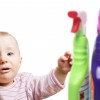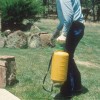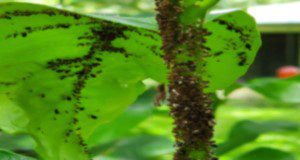Interest around pesticides and possible alternatives to them have increased in recent years. As individuals seek out possible alternatives, some consider making their own solutions to pest control. Homemade pesticide recipes abound online and are commonly seen in various social media platforms. This new 3-page publication of the UF/IFAS Pesticide Information Office looks at the legality of these mixes, when and where they can be used, and what other considerations need to be taken into account when utilizing these mixes. Written by Brett Bultemeier and Jason Ferrell.
https://edis.ifas.ufl.edu/pi288
Tag: Pesticides for Home Lawn Landscape and Garden
Pool Chemicals and Personal Safety
 Pool chemicals are among the most common household substances and are used to protect health in recreational waters. Pool chemicals containing chlorine safeguard against recreational-water illnesses caused by disease-causing pathogens, such as the diarrhea-causing Cryptosporidium. They also enhance disinfection by regulating water pH. But even though these materials are regularly handled by homeowners, most don’t ever realize that they are handling pesticides. This 3-page fact sheet was written by Fred Fishel, and published by the UF Department of Agronomy, September 2014.
Pool chemicals are among the most common household substances and are used to protect health in recreational waters. Pool chemicals containing chlorine safeguard against recreational-water illnesses caused by disease-causing pathogens, such as the diarrhea-causing Cryptosporidium. They also enhance disinfection by regulating water pH. But even though these materials are regularly handled by homeowners, most don’t ever realize that they are handling pesticides. This 3-page fact sheet was written by Fred Fishel, and published by the UF Department of Agronomy, September 2014.
http://edis.ifas.ufl.edu/pi253
Children and Pesticides (PI226)
 Children act fast, but so do poisons, including pesticides. Fortunately for most parents, their children are not harmed when the parents have a momentary lapse and aren’t supervising them for a short time. But how would parents respond if they suddenly turn around, and their toddler is holding a can of household aerosol insect killer? This 3-page fact sheet outlines some facts and precautionary measures regarding children and pesticides in the home environment, so parents have a better idea of how to keep harmful chemical products away from their children. Written by F.M. Fishel, and published by the UF Department of Agronomy, March 2013.
Children act fast, but so do poisons, including pesticides. Fortunately for most parents, their children are not harmed when the parents have a momentary lapse and aren’t supervising them for a short time. But how would parents respond if they suddenly turn around, and their toddler is holding a can of household aerosol insect killer? This 3-page fact sheet outlines some facts and precautionary measures regarding children and pesticides in the home environment, so parents have a better idea of how to keep harmful chemical products away from their children. Written by F.M. Fishel, and published by the UF Department of Agronomy, March 2013.
http://edis.ifas.ufl.edu/pi226
Guia de seguridad para el uso de pesticidas en el hogar (PI244)
 En este documento se describen las medidas que ayudarán en la toma de decisiones inteligentes y seguras sobre la utilización de plaguicidas en el hogar y césped/jardín. This 4-page fact sheet was written by Frederick M. Fishel, and published by the UF Department of Agronomy, December 2012.
En este documento se describen las medidas que ayudarán en la toma de decisiones inteligentes y seguras sobre la utilización de plaguicidas en el hogar y césped/jardín. This 4-page fact sheet was written by Frederick M. Fishel, and published by the UF Department of Agronomy, December 2012.
http://edis.ifas.ufl.edu/pi244
Pesticide Use Trends in the U.S.: Pesticides for Home and Garden Uses (PI140/PI177)
This 4-page fact sheet focuses on the market sector for pesticides used for the home and garden, providing data on volumes used and sales of pesticides from the latest EPA survey data available, 2006 – 2007. Written by F.M. Fishel, and published by the UF Department of Agronomy, February 2011.
http://edis.ifas.ufl.edu/pi177
PI226 Children and Pesticides
PI226, a 3-page illustrated fact sheet by F.M. Fishel, outlines some facts and basic precautionary measures regarding children and pesticides in the home environment. Includes references. Published by the UF Department of Agronomy, March 2010.
http://edis.ifas.ufl.edu/pi226
PI173/PI209 Handling Total Release Foggers
PI-173, a 4-page illustrated fact sheet by Frederick M. Fishel, cautions about the risks of total release foggers (TRFs), also called "bug bombs," and common sense precautions people can take to reduce risks before using one in any building. Includes references. Published by the UF Department of Agronomy, March 2009.
http://edis.ifas.ufl.edu/PI209
PI175/PI211 Using Your Handheld Lawn and Garden Sprayer
PI-175, a 4-page illustrated fact sheet by F. M. Fishel, advises homeowners in choosing the right type of handheld sprayer and using it properly. Includes examples and references. Published by the UF Department of Agronomy, January 2009.
http://edis.ifas.ufl.edu/PI211
